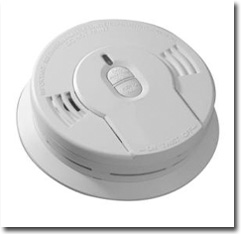
Project Funder: U.S. Centers for Disease Control and Prevention (CDC)
Project Partners: Centers for Disease Control and Prevention (CDC) and local personnel from Georgia, Virginia, Washington, Kentucky, and Oklahoma
Project Contact: Jonathan Wilson, jwilson@nchh.org, 443.539.4162
Project Description: In 1998, the Centers for Disease Control and Prevention’s (CDC) National Center for Injury Prevention and Control (NCIPC) began awarding funds to 14 state health departments to implement Smoke Alarm Installation and Fire Safety Education (SAIFE) programs, which included installation of lithium-powered “10-year” smoke alarms in homes at high risk for fires and injuries. With CDC funding, the National Center for Healthy Housing (NCHH) randomly selected 427 homes in five participating states (Georgia, Virginia, Washington, Kentucky, and Oklahoma) for enrollment in the project. Inspectors from each state enrolled dwelling units, had residents sign a release from liability form, and conducted visual inspections of the installed smoke alarms and CO alarms (if present).
Eight to 10 years after the installation of these smoke alarms, 33% of the alarms were functional, 37% were missing, and 30% were present but nonfunctional. Factors related to missing alarms included installation in rental properties, properties where the resident at the time of installation no longer lived, as well as variability by state. Factors related to nonfunctional alarms included installation in a kitchen, brand of alarm, as well as variability by state.
To prevent the likelihood of residents interfering with alarm operability, future programs should consider installing tamper-proof, sealed lithium-powered smoke alarms. Installing alarms with end-of-life indicators would also help occupants recognize when alarms need to be replaced. State health departments should work with fire departments to schedule periodic visits to homes after smoke alarm installation to assess the alarm functionality.